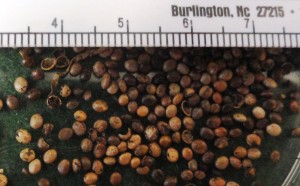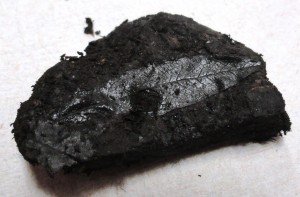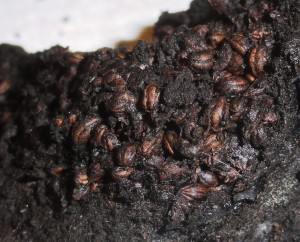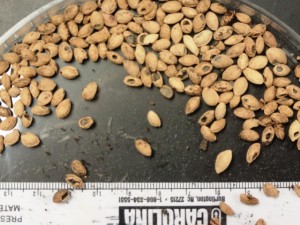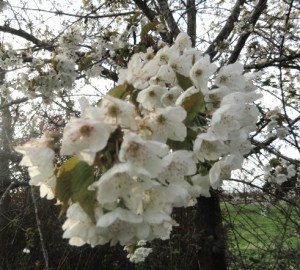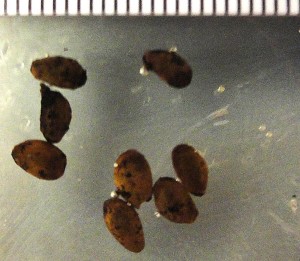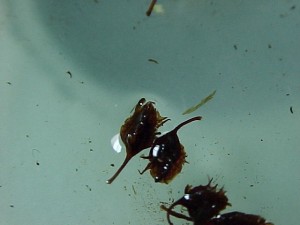Woodburn Plants
The most common finds in the digs at Woodburn High School are of plants. These plants are represented by seeds, leaves and wood. It is clear from the samples gathered, that this was a wetland/bog environment with slow moving water that fluctuated in depth, but at many times was quite shallow (below a meter in depth).
Below is a list of the plants found so far.
Bog Bean Menyanthes trifoliata

Menyanthes trifoliata more likely known as Bog Bean grows in North America. They grow in shallow water like ponds, marshes, and bogs. These plants grow six inches below the water and up to twelve inches above water. Bog beans bloom from May through June, and the color of their flowers is white.
The seeds are the most common item found in the Woodburn deposits. Each year, thousands of seeds are seen and removed from the soils, indicating that the plant was heavily populated in the area during the late Pleistocene.
The information above was provided by Patty Arrequin a junior from WASST 2012/13
 Engellmann spruce
Engellmann spruce

Mountain Hemolck
Tsuga mertansiana
The Engelmann spruce grows in areas of considerable moisture, usually above 8,400 ft. It’s most often found in high forests. Its scientific name is the Picea Engelmannii. It grows up to 50 meters tall, and its trunk seldom grows over 1 meter thick. The Engelmann Spruce can be killed by spruce beetles which eat the tree. This tree can be found in parts of Canada and in the US.
The above information was provided by Bernice Santiago a freshman at WeBSS 2013/14
Pacific willow Salix lasiandra

The Pacific Willow is found in Alaska, Canada and part of the United States. The Pacific Willows are found by water. The Pacific Willow is large shrubs or small trees growing to 4-11 m (13-36 ft.) tall. They are about a greenish-brown to grey-brown color. The leaves are narrow elliptic to lance late, 4-7 cm long and 1-35 cm board. Glossy, dark and green and hairless. Deer, Elk, Moose, and Beaver eat the wood and leaves of the Pacific Willow.
The above information was provided by Cyerra Carrasquillo a freshman at WeBSS 2013/14
Douglas’ Water Hemlock Cicuta douglasii
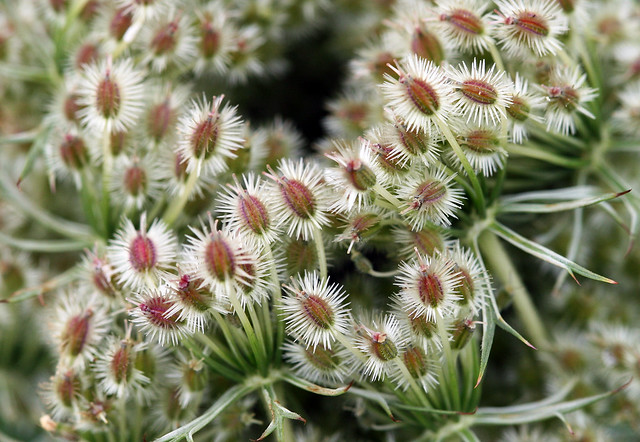
Cherry tree Prunus spp.
Oregon grape Mahonia aquifolium
Dock (Rumex spp.)
